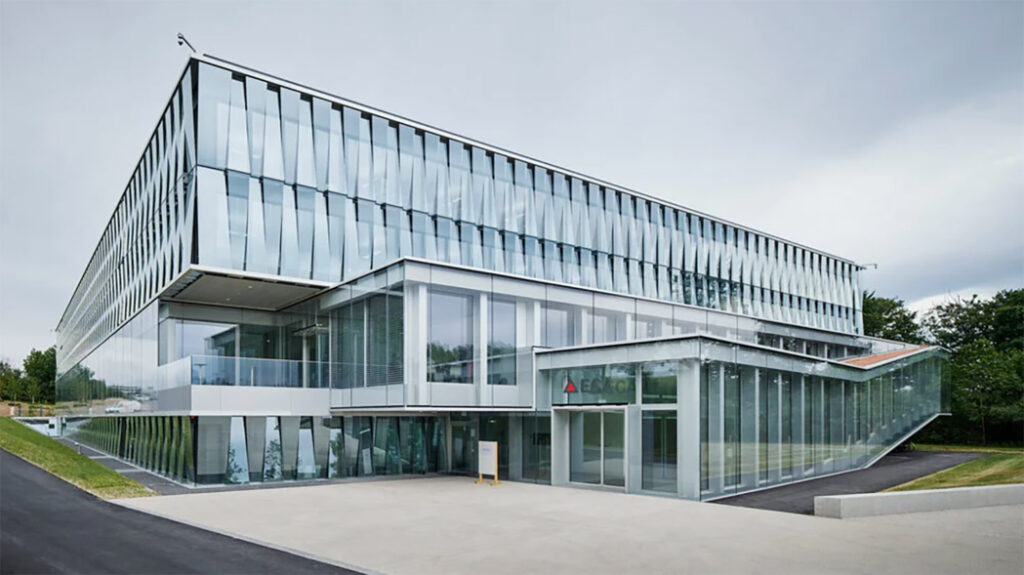Facade engineers and architects play a crucial role in designing intelligent facades that enhance building safety during emergencies. By integrating IoT-enabled sensors, fire-resistant materials, automated ventilation, and fire suppression systems, they ensure rapid hazard detection and mitigation. Innovations like AI-driven predictive safety and IoES improve response times, while high-strength glass and fire-rated glazing systems reinforce structural integrity. Balancing safety with energy efficiency, these specialists contribute to the development of resilient, sustainable, and emergency-ready buildings.
Real-Time Response:
Facade Tech in Emergency Mode
Key Components of Emergency Response Integration Integrating emergency response systems into intelligent facades requires a combination of advanced technologies and strategic design. Key components include IoT-enabled sensors, automated ventilation systems, fire suppression mechanisms, and real-time communication networks. These elements work together to detect hazards, mitigate risks, and ensure occupant safety. For instance, multi-sensor arrays monitor environmental conditions such as smoke, temperature, and air quality, enabling immediate detection of threats like fires or toxic gas leaks.
Importance of Real-Time Monitoring and Automation Real-time monitoring is critical in emergency response systems. IoT-enabled sensors continuously collect and transmit data to centralized control systems. Automation ensures that responses—such as activating fire shutters or opening ventilation pathways—are executed instantly without human intervention. This rapid response minimizes damage and enhances safety during critical situations.
Technological Innovations in Emergency-Ready Facades
IoT-and IoES-Enabled Sensors for Hazard Detection
IoT sensors embedded in facades provide constant monitoring of environmental conditions. These sensors detect smoke, temperature spikes, structural stress, or harmful gases, triggering immediate alerts to building management systems. For example, advanced thermal imaging sensors can identify fire hotspots before flames spread, allowing for preemptive action.
The Internet of Emergency Services (IoES) represents a significant advancement in emergency management. In the context of emergency-ready facades, IoES facilitates improved hazard detection and response through interconnected IoT sensors that relay critical data directly to first responders and building management teams.
For instance, IoES-enabled systems can provide live structural integrity assessments during seismic events, allowing authorities to prioritize evacuation efforts. Similarly, integrated air quality sensors can detect hazardous gas leaks and communicate directly with emergency services to mitigate risks efficiently. By leveraging IoES, buildings become more resilient, ensuring quicker response times and enhanced occupant safety during crises.

Automated Ventilation and Fire Suppression Systems
Fires originating in facades pose significant challenges, often going unnoticed until smoke enters the building interior. To enhance fire safety, advanced facade fire protection systems integrate infrared (IR) flame detectors, such as the AutroFlame IR flame detector, which provides early detection by isolating its monitoring field to the facade while minimizing interference from environmental factors like sunlight, rain, or dust.
Dynamic facades equipped with automated ventilation systems can redirect airflow to prevent the spread of smoke or toxic gases during emergencies. Integrated fire suppression systems—such as water mists or inert gas release mechanisms—are activated automatically upon hazard detection. These systems are designed to operate seamlessly with facade elements like operable windows or louvers to manage airflow and compartmentalize affected areas.
AI-Driven Predictive Safety Mechanisms
Artificial intelligence enhances emergency response by analyzing historical data and real-time inputs to predict potential risks. AI algorithms can identify patterns that indicate structural vulnerabilities or environmental threats and activate preventive measures. For instance, predictive models can adjust facade configurations to reduce wind loads during storms or preemptively close openings to contain fire spread.
These innovations collectively transform facades into active participants in building safety, ensuring a higher level of preparedness and resilience against emergencies.
Safety First:
Engineering Emergency-Ready Facades
Material Selection for Resilience and Safety
Fire-Resistant Materials for Facades: Ensuring fire safety in intelligent facades requires careful selection of materials. Fire-resistant materials like mineral wool insulation, non-combustible metal panels (e.g., aluminum composite panels with a mineral core), and specialized coatings can prevent fire spread and maintain structural integrity during emergencies. Implementing fire-rated glazing systems, which incorporate multiple layers of heat-resistant glass and intumescent interlayers, can significantly delay fire penetration and protect occupants, allowing safe egress from the building.
High-Strength Glass and Structural Integrity: High-strength glass, such as laminated glass, is essential for maintaining structural integrity and preventing fragmentation during emergencies. Laminated glass, utilizing interlayers like SentryGlas®, enhances rigidity and adhesion, enabling the glass to withstand higher loads and maintain its form even after breakage. In the event of an explosion or impact, the glass remains intact, minimizing the risk of injury from flying debris.
Energy Efficiency and Emergency Preparedness
Balancing Safety Features with Energy Optimization: Intelligent facades should balance safety with energy efficiency. Automated shading systems, combined with smart sensors, can adjust to optimize natural light and reduce heat gain, even during emergency scenarios. By integrating fire-resistant materials with BIPV technology, facades can maintain their fire-resistant properties while generating clean energy.
Dual-Function Systems for Sustainability: Dual-function systems can enhance sustainability and emergency preparedness. Automated ventilation systems, designed to improve indoor air quality under normal conditions, can be activated during emergencies to remove smoke and improve visibility for occupants and first responders. Similarly, integrated water mist systems, while promoting efficient water usage, can be deployed rapidly to suppress fires and limit damage.
Building a Safer Tomorrow:
The Promise of Intelligent Facades
Integrating emergency response systems into intelligent facades presents unique challenges, particularly regarding cost, maintenance, and technological complexity. High upfront investments in sensors, actuators, and control systems can be a barrier. However, lifecycle cost analyses often reveal long-term savings through reduced insurance premiums and enhanced operational efficiency. Regular maintenance is crucial to ensure continuous functionality; robust system design and predictive maintenance protocols, leveraging IoT sensors for real-time monitoring, can mitigate maintenance costs and downtime.
Adhering to stringent safety regulations is paramount. Compliance involves rigorous testing, certification, and adherence to building codes, necessitating close collaboration with regulatory bodies. To maintain safety standards while incorporating innovative technologies, performance-based design approaches allow for flexibility in achieving specific safety outcomes.
Future Trends in Emergency-Ready Intelligent Facades
The future of emergency-ready intelligent facades lies in the convergence of AI, machine learning, and smart city infrastructure. AI algorithms can analyze sensor data to predict potential hazards, such as fires or structural failures, enabling proactive responses. Machine learning enhances the system’s ability to adapt to evolving threats and optimize emergency protocols. Integration with smart city infrastructure allows for seamless communication with emergency services, improving response times and coordination. This holistic approach enhances urban resilience and ensures building occupants’ safety.
Conclusion By integrating emergency response systems, intelligent facades offer proactive solutions for improved occupant safety. Addressing implementation challenges through cost-effective design, predictive maintenance, and strict regulatory compliance is essential. As technology evolves, these intelligent facades will play an increasingly critical role in creating safer, more sustainable, and resilient urban environments, underscoring their potential to redefine building safety standards.
Useful links
https://www.intechopen.com/chapters/88788
https://www.sciencedirect.com/science/article/abs/pii/S0926580519300780
As the Editor of FacadeToday.com, I merge my passion for Design, Architecture and Technologies with three decade of experience collaborating with entrepreneurs across many industries. My career has centered on fostering innovation, scaling business opportunities, and bridging gaps between technical experts, business developers, and creative visionaries. I thrive at the intersection of sustainable solutions, material advancements, and smart technologies, curating insights on themes like energy-efficient facades, smart tech, and advanced manufacturing. With a commitment to lifelong learning, I aim to empower architects and facade engineers by translating innovations into actionable knowledge, driving the industry forward through purposeful connectivity and cutting-edge practices.






